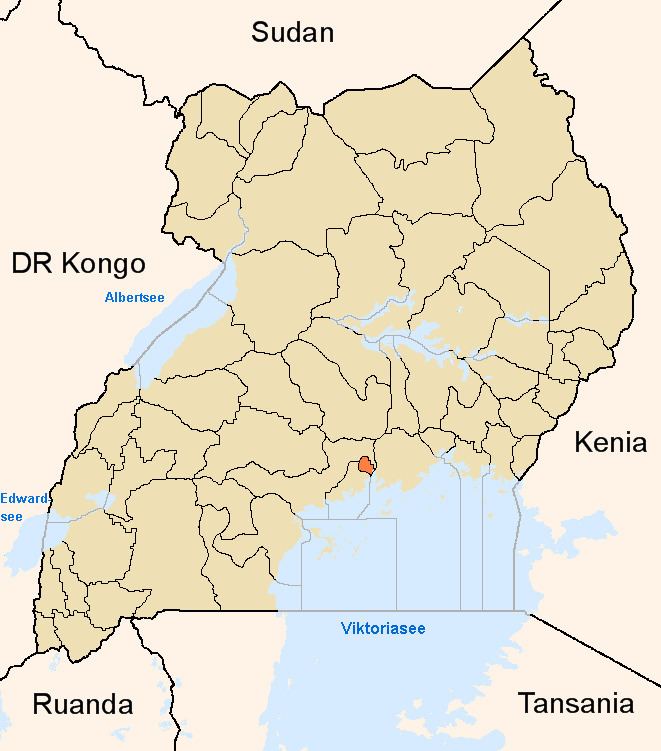Type Private | Industry Financial Services Founded 1926 | |
 | ||
Key people Obella OodeChairmanStephen MukweliManaging Director Products Loans, Checking, Savings, Investments Revenue US$1.7 million(UGX:4.28 billion) (2012) Total assets US$54 million(UGX:135.7 billion) (2012) Profiles | ||
Postbank uganda ltd new diaspora classic banking 2016
PostBank Uganda is a non-bank credit institution in Uganda. Its activities are supervised by the Bank of Uganda, the country's central bank and national banking regulator.
Contents
- Postbank uganda ltd new diaspora classic banking 2016
- Financial inclusion with postbank uganda 1 1 vob
- Overview
- History
- Ownership
- Branch network
- Fixed branches
- Mobile branches
- Governance
- References
Financial inclusion with postbank uganda 1 1 vob
Overview
As of December 2012, PostBank Uganda was a small, but growing credit institution whose assets were estimated at US$54 million (UGX:135.7 billion).
History
PostBank Uganda has been in existence since 1926. It started out as a department in the Post Office. In February 1998 PostBank Uganda Limited was incorporated in accordance with the Communications Act of 1997 to take over the operations of the former Post Office Savings department.
PostBank Uganda was incorporated under the Companies Act in February 1998 as a limited liability company. The bank's operations are supervised by the Bank of Uganda under the Financial Institutions Act. It is classified as a Tier II Institution (Non-Bank Credit Institution), by the Bank of Uganda.
PostBank Uganda subscribes to the Depositors Insurance Scheme at Bank of Uganda. If PostBank Uganda fails, the bank's depositors are insured up to Sh 3 million (approximately US$1,600.00) in 2009, per eligible account. In 2009, PostBank Uganda applied to the Bank of Uganda to become a fully licensed commercial bank.
In February 2016, Ugandan media sources reported hat the government was planning to merge Postabank Uganda with Pride Microfinance Limited, to form an agricultural bank.
Ownership
PostBank Uganda is wholly owned by the Government of Uganda.
Branch network
As of May 2014, PostBank Uganda maintained a branch network of 32 fixed branches and 17 mobile banking units, totaling 49 branches.
Fixed branches
- Arua Branch - Arua
- Bombo Branch - Bombo
- Bugoloobi Branch - Bugoloobi, Kampala
- City Branch - Nkrumah Road, Kampala (Head Office)
- Entebbe Branch - Entebbe
- Fort Portal Branch - Fort Portal
- Gulu Branch - Gulu
- Hoima Branch - Hoima
- Iganga Branch - Iganga
- Jinja Branch - Jinja
- Kabale Branch - Kabale
- Kakiri Branch - Kakiri
- Kampala Road Branch - Kampala Road, Kampala
- Kamwenge Branch - Kamwenge
- Kanungu Branch - Kanungu
- Kasese Branch - Kasese
- Kayunga Branch - Kayunga
- Kitgum Branch - Kitgum
- Lacor Branch - Lacor Hospital, Gulu
- Lira Branch - Lira
- Masaka Branch - Masaka
- Mbale Branch - Mbale
- Mbarara Branch - Mbarara
- Mubende Branch - Mubende
- Nakasongola Branch - Nakasongola
- Ndeeba Branch - Ndeeba, Kampala
- Nkrumah Road Branch - Nkrumah Road, Kampala
- Ntungamo Branch - Ntungamo
- Soroti Branch - Soroti
- Wandegeya Branch - Wandegeya, Kampala
- William Street Branch - William Street Kampala
- Koome Island Branch - Koome Island
Mobile branches
The mobile branches are located in the following towns and districts:
- Budaka - Budaka District
- Bududa - Bududa District
- Bukedea - Bukedea District
- Butaleja - Butaleja District
- Fort Portal - Kabarole District
- Kamwenge - Kamwenge District
- Kapchorwa - Kapchorwa District
- Kibaale - Kibaale District
- Kyegegwa - Kyegegwa District
- Kyenjojo - Kyenjojo District
- Manafwa - Manafwa District
- Pallisa - Pallisa District
- Sironko - Sironko District
- Tororo - Tororo District
Governance
The activities of PostBank Uganda are directed by the its board of directors. As of May 2014, the chairman of the board was Obella Oode. The managing director and chief executive officer was Stephen Mukweli. The current board was installed in 2012 for a five-year term. The day-to-day activities of the bank are supervised by a team of ten bank managers, headed by the managing director.
